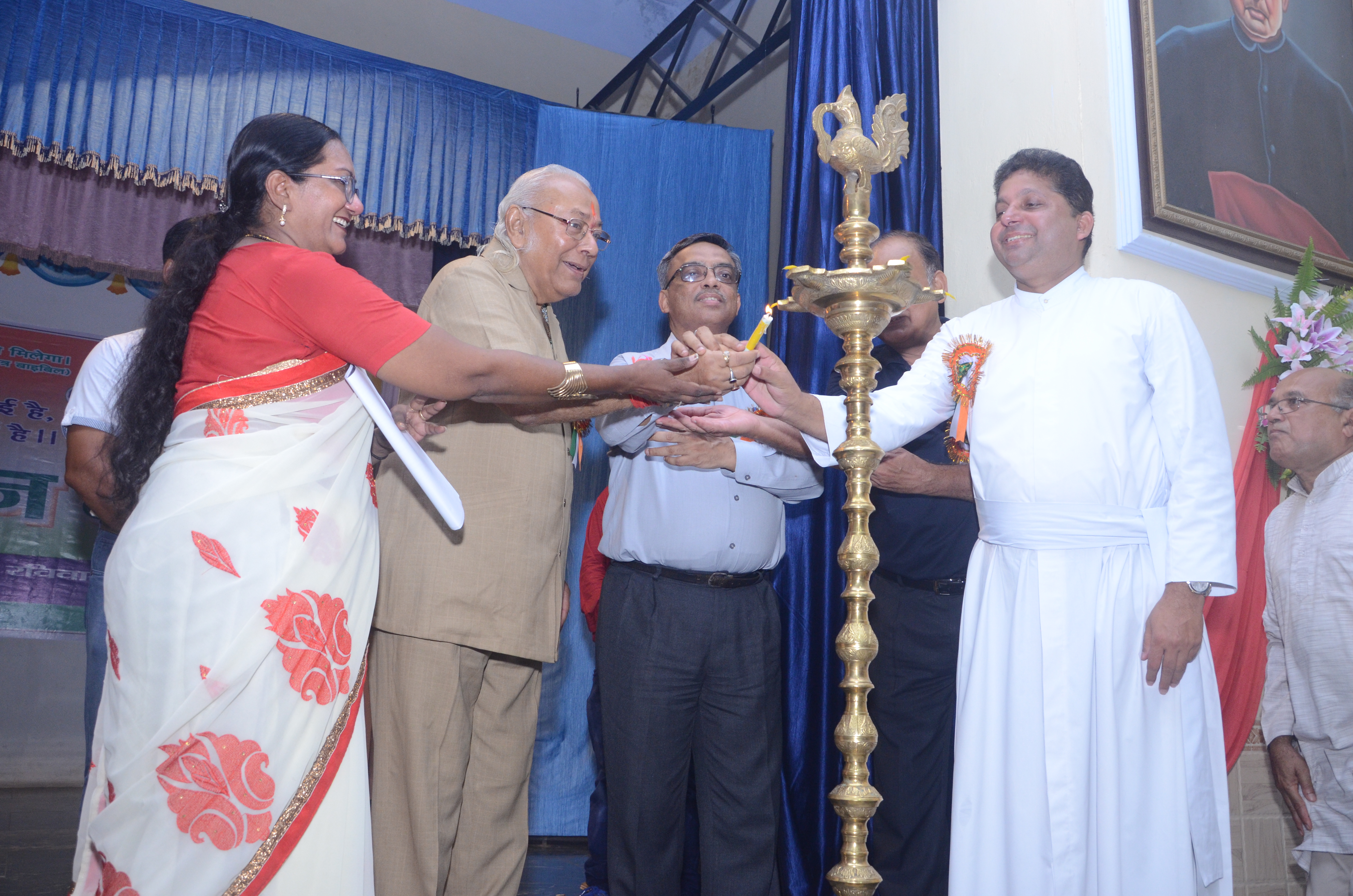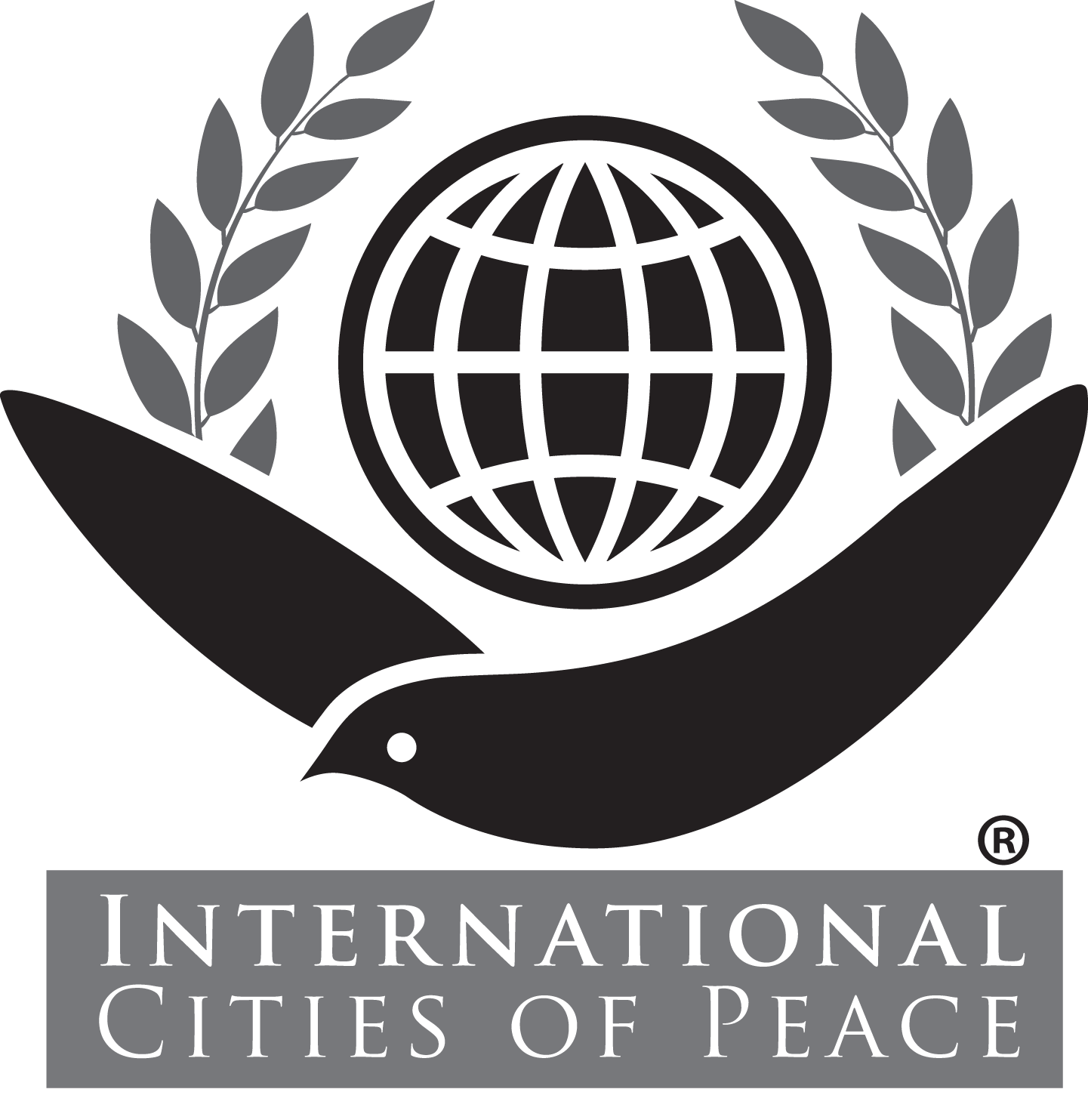Allahabad, India: City of Peace
We welcome The leader of the peace cities movement in Allahabad, Uttar Pradesh, India, Lily Bhavna Kauler, a human rights activist in Allahabad. She will lead the city towards tolerance and cooperation among the public and an end to violence.
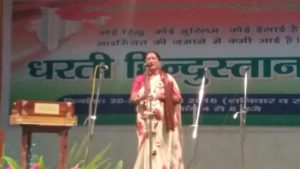
Allahabad is one of the oldest cities in India. It is crowned in ancient scriptures as ‘Prayag’, ‘Prayagraj’ or ‘Teertharaj’ and is considered the holiest of pilgrimage centres of India. It is situated at the confluence of three rivers- Ganga, Yamuna and the invisible Saraswati. The meeting point is known as Triveni and is very sacred to Hindus. The Kumbh held in every six years and Mahakumbh in every 12 years at Allahabad (Sangam) are the largest gatherings of pilgrims on this earth.
Historically, the city has been a witness to many important events in India’s freedom struggle such as emergence of the first Indian National Congress in 1885, the beginning of Mahatma Gandhi’s non-violence movement in 1920.
Note: Introduction page with information primarily at the time of joining International Cities of Peace. For updates, please contact the liaison.
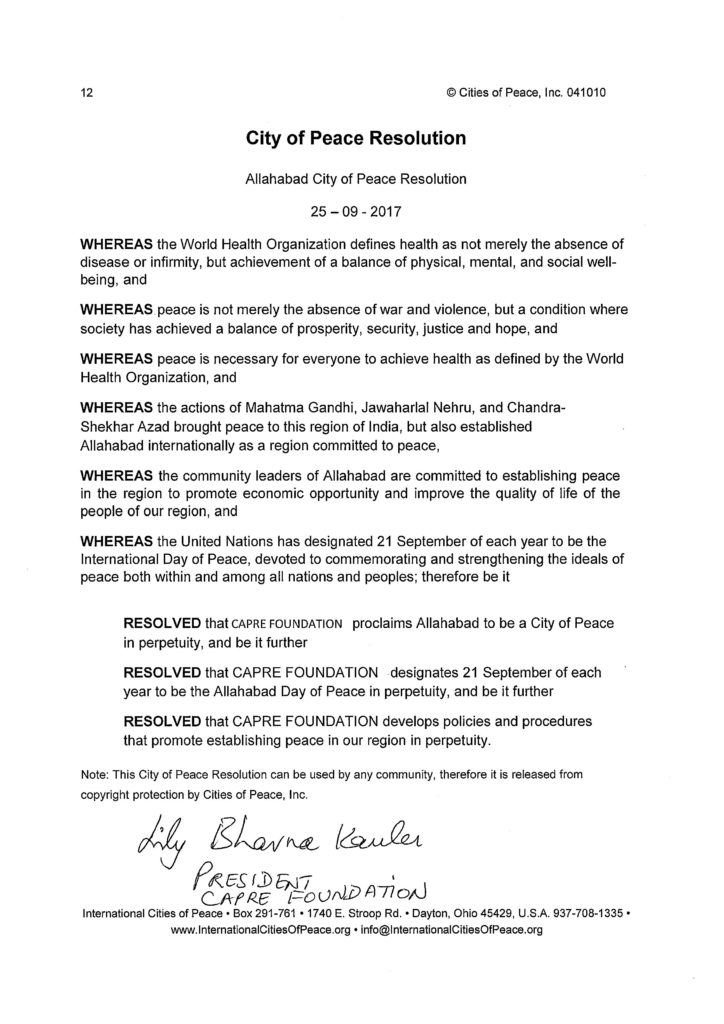
CAPRE FOUNDATION
Lily Bhavna Kauler as President of Capre Foundation is presently working through its various development programs with the Mal Paharia tribes (Dumka in Jharkhand state) which is one of the primitive tribal groups of Jharkhand state are found in the districts of Dumka, Jamtara, Godda, Deoghar and Pakur.
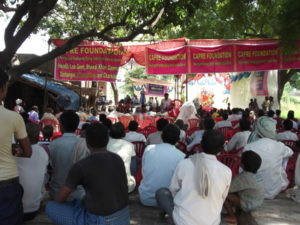
They were nomadic and now live on very unproductive lands. Their present economic, educational and social situation is so precarious that they are on the verge of extinction.
The Paharia villages where CAPRE is presently working are situated either on hilltops or on the slopes. An average village will have about 20-30 houses and the houses are densely situated, thus susceptible to fire. The houses are mostly thatched/tiled huts with two rooms supported on pillars of poles, with a main pillar at the center. The roof is kept low so that it may not be blown off by the wind. Most villages are devoid of basic amenities.
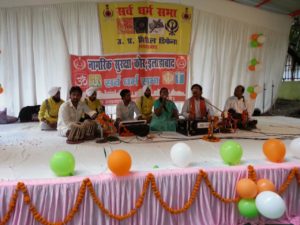
Majority of the Paharias Capre Foundation works with are used to dry farming and have strong connections with the forest and land. They live from the sale of forest products – firewood, cotton, Kendu leaves, Mahua flower and other edible fruits and roots. But the price they get is less than half of what they can get in the markets.
Capre Foundation has found that the general health of the Paharia people is poor; increasing their susceptibility to disease. Several water borne diseases are commonplace. The majority suffer from malnutrition and acute diseases like malaria and kala-a-azar in the epidemic form, cases of leprosy, and goiters (among females). The poor health care facilities contribute to this. We have also found that widespread addiction to Mahua wine also impacts on their health. These are significant factors in their child mortality rate.

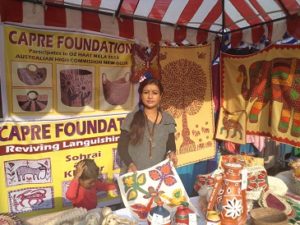
MISSION
To make Allahabad the best peace city in the world by the end of 2018 by taking baby steps each day towards a peaceful and harmonious Allahabad. It was in Allahabad that Mahatma Gandhi proposed his program of non-violent resistance to liberate India
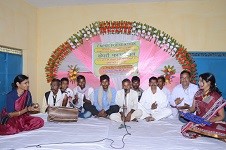
VISION
We envision that all Allahabad residents have a shared humanity and respect of each other’s religions, cultures and customs with compassion, peace and joy which they can spread globally.
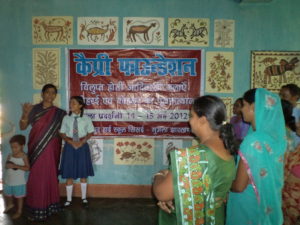
GOALS
• To organise a ‘SADBHAVNA’ multi religious conference every year to create an understanding in the city between various religious groups followed by a solidarity FOLK concert
• Promote interpersonal dialogue and human warmth.
• Run activities which promote the Allahabad public to be tolerant and respectful to each other.
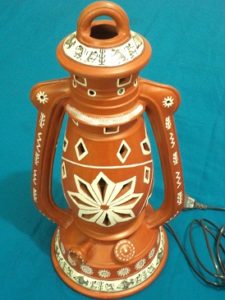
• Conduct activities which bring about social change for the establishment of a nonviolent social order
• Promote non-violent alternative dispute resolution methods with friends, neighbours and colleagues.
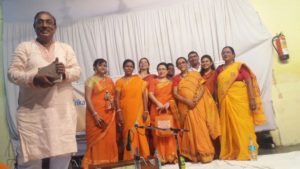
• To conduct a peace walk which culminates in school children exhibit art work which is peace related. Prize distribution follows.
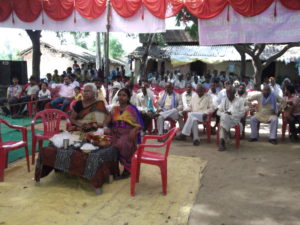
• To create awareness of environment and peace in the community
• Conduct cultural festivals to encourage peace and harmony


Letter of Intent with Signatures of Citizens
ABOUT LILY BHAVNA KAULER
Lily Bhavna Kauler director of Capre Foundation, has had 26 years of experience in working with Dalits in India and Indigenous tribes around the world.
She has spear-headed issues of bio cultural diversity, peace issues and Human Rights issues for tribal survival and has been leading a movement for catalyzing culture as a constitutive element in development for decades.
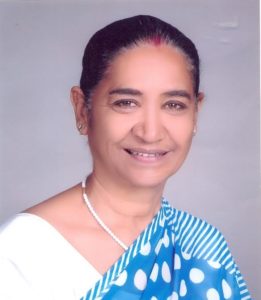
Lily got married in India and migrated to Australia in 1984 She has been a university lecturer and Peace and Human Rights activist since then.
Under the able guidance of Ken Colbung, an internationally acclaimed Aboriginal Leader and Peace Activist from Perth Western Australia Lily Bhavna Kauler became deeply involved in Human Rights and Peace promotion and indigenous affairs from 1984.
• She worked in Indigenous child welfare for many years, becoming secretary of the Secretariat of National Aboriginal and Islander Child Care.
• Lily’s interest in Aboriginal culture was deep-seated and twice she presented discussion papers to the United Nations (Geneva, 1994; Switzerland, 1995).
• Lily Bhavna served as a board member for both the Western Australian Museum (Aboriginal Cultural Heritage Advisory Committee) and the Berndt Museum of Anthropology at the University of Western Australia.
• She was a researcher for the National Inquiry into the Separation of Aboriginal and Torres Strait Islander Children from their families and she conducted several interviews for the’ BRINGING THEM HOME’ report.
• Alongside her work in Aboriginal child welfare, Lily Bhavna Kauler has long been an advocate for Aboriginal cultural heritage, holding a series of advisory positions at state and national levels.
MAJOR REPORTS in AUSTRALIA
1992
Report: Organisational Analysis of the Ethnic Child-Care Resource Unit The Management Committee ECCRU. Western Australia
1990
Ethnographic Survey: Old Swan Brewery LandCorp April Western Australia
1994
Report on the Swan Brewery in Relation to Liquor Licensing Application. Bluegate Nominees Western Australia
1995
Native Title Research Pilbara for Robe River Mining Western Australia
1995
Report on Heritage for the Ballaruk Aboriginal Corporation Heritage Commission of Western Australia
1996
Native Title Research Ballaruk Corporation Western Australia Western Australia
2002
Native Title Research Wongatha Western Australia
Santhal and Pahariyas
Presently she is lobbying for Santhal and Pahariya tribals in Dumka Jharkhand so that their designs are safe from being copied.
IPR laws Siliguri assam tribals
Lily has been collaborating with Akhil Bharatiya Adivashi Bikash Parishad (ABAVP – All India Tribal Development Council) in Jalpaiguri and Siliguri lobbying for better employment prospects for tribals Oraon and Mundas employed in tea gardens as pluckers and factory workers in Doars Terai. She is working to get their art and craft recognized and copyrighted.
Work with Santhal tribes Jharkhand
The Capre Foundation intervention covers 10 villages in Jharkhand. The area of Santhal Pargana is rich in natural resources like coal, forest products and stone.
Frequent drought situation and scarcity of food, lack of adequate capital for agriculture and existence of limited fertile land (2-3%) with the community and migration are some factors that have allowed exploitation of the tribals by the money lenders.
Due to the lack of proper Government schemes children and women become the most vulnerable leading to malnutrition and disease.
• Operationalization of the traditional tribal local governance structures
• Initiate a diversified program to strengthen the traditional governance systems to take ownership of the natural resources
• Monitoring government programs after curbing local corruption
• Bringing government schemes to these regions.
• Increasing accountability of the government officials and politicians.
• Increase birth registration to 100%
• Increase employment opportunities
• Ensuring transparent and effective government system in Education, health schemes.
• Skill upgradation for local tribal artisans
CONTACT INFORMATION
CAPRE FOUNDATION <caprefoundation@gmail.com>
ABOUT ALAHABAD, INDIA
The city of Allahabad is among the largest cities of Uttar Pradesh and situated at the confluence of three rivers- Ganga, Yamuna and the invisible Saraswati. The meeting point is known as Triveni and is especially sacred to Hindus. The earlier settlements of the Aryans were established in this city, then known as Prayag” Prayagasya Praveshshu Papam Nashwati Tatkshanam. All sins are cleaned with entry in Prayag ( the ancient name of modern time Allahabad) PRAYAG is one of the historic and mythological cities of India with glorious past and present. It continues to enjoy the distinction of being a place of haunting and lasting memories. It is a city of mixed culture of Hindu, Muslims, Jains and Christians.
Its sanctity is manifest by references to it in Purans, the Ramayan and the Mahabharata. According to Hindu Mythology, Lord Brahma, the creator God of the Trinity, chose a land on earth(ie Prayag) to perform ‘Prakrista Yag’, at the beginning of the creation and he also refereed to it as Tirth raj or the King of all pilgrimage centres’ As per writing of ‘Padam Puran’ – “As the sun is amongst the moon and the moon amongst the stars, likewise ‘Prayag is best amongst all places of pilgrimage” The bathing at Prayag is mentioned in Brahma Puran s “ in the month of Magha at the bank of Ganga Yamuna in Prayag bestows results of millions and millions of Ashvmedha Yajna
Prayag is birth place of Som, Varuna and Prjapati. Prayag has been associated with mythological personalities in Brahmanical(Vedic) and Buddhist Literatures. It was the seat of the great sage Bhardwaj, sage Durvasa and Sage Pannas sage Bhardwaj lived here circa 5000BC and taught more than 10000 disciples. He was the greatest philosopher of ancient world.
The Present Jhunsi area very close to sangam was the kingdom of Chandrabanshiya ( lunar clan ) king Pururava. Nearby Kaushambi bloomed to prosperity during Vatsa and Maurya Rule. The earliest monument of antiques Ashok Pillar with inscriptions of third century B.C. clears the inscriptions of his directions to his fellow Rajas and praise of King Samudragupta. The Chinese traveler Huan Tsang in 643 BC found Prayag inhabited by many Hindus who regarded the place very Holy.
An Ancient Indian city
Allahabad the most popular Hindu pilgrimage city in North India: Allahabad is one of the important tourist destinations in India. This city is well known for its religious places which always attracts tourists to visit here.
Allahabad is an ancient city of India. Puranas state that Prayag or the ancient city of Prathisthana was ruled by the Chandrawanshi kings. People even ended their lives in this sacred land to attain salvation, a practice that has been testified in the accounts of Chinese traveller Hieun-Tsang who visited this great land in the reign of king Harshavardhana.
According to historian Badauni, the great Mughal Emperor Akbar also visited Prayag and founded the imperial city of Illahabad that later on came to be known as Allahabad. The construction of the Akbar Fort bears testimony to the importance of the city that was made the provincial capital during the Mughal period.
Even during the British period, the capital of north-west province was shifted to Allahabad from Agra by the then Viceroy Lord Canning. The city not only served as the epicentre of the freedom struggle but continued to shape the destiny of the country even after independence through the various prime ministers who hailed from the city.
Puranas pay a glowing tribute to the city of Prayag which is also illustrated in the beautiful verses of the great poet Kalidasa. The famous character of poet in the drama Raghuvansham, speaks of the great line which divided the clear blue stream of The Yamuna from the muddy stream of The Ganga.
Allahabad, also known by its original name Prayag, is one of the largest cities of the North Indian state of Uttar Pradesh in India. Although Prayaga was renamed Ilahabad in 1575, the name later became Allahabad in an anglicized version in Roman script.
The city is situated on an inland peninsula, surrounded by the rivers Ganges and Yamuna on three sides, with only one side connected to the mainland Doab region, of which it is a part. This position is of importance in Hindu scriptures for it is situated at the confluence, known as Triveni Sangam, of the holy rivers. As per Rigveda the Sarasvati River (now dried up) was part of the three river confluence in ancient times.
It is one of four sites of the Kumbh Mela, an important mass Hindu pilgrimage.
The ancient name of the city is Prayag (Sanskrit for “place of sacrifice”), as it is believed to be the spot where Brahma offered his first sacrifice after creating the world. Since its founding, Prayaga renamed Allahabad has played an important role in the history and cultural life of India.
Allahabad, the freedom struggle, and Indian politics.
During the Mutiny of 1857, Allahabad had only a small garrison of European troops. Taking advantage of this, the rebels brought Allahabad under their control. Maulvi Liaquat Ali, one of the prominent leaders of the rebellion, was a native of the village of Mahgaon near Allahabad.
After the Mutiny was quelled, the British established the High Court, the Police Headquarters and the Public Service Commission in the city. This transformed Allahabad into an administrative centre, a status that it enjoys to this day.
The fourth and eighth session of the Indian National Congress was held in the city in 1888 and 1892 respectively on the extensive grounds of Darbhanga Castle, Allahabad.[4][5] At the turn of the century, Allahabad also became a nodal point for the revolutionaries.
In 1931, at Alfred Park in Allahabad, the revolutionary Chandrashekhar Azad killed himself when surrounded by the British Police. The Nehru family homes of Anand Bhavan and Swaraj Bhavan, both in Allahabad, were at the center of the political activities of the Indian National Congress. In the years of the struggle for Indian independence, thousands of satyagrahis(nonviolent resistors), led by Purshottam Das Tandon, Bishambhar Nath Pande and Narayan Dutt Tiwari, went to jail. The first Prime Minister of India, Jawaharlal Nehru, as well as several Union ministers such as Mangla Prasad, Muzaffar Hasan, K. N. Katju, and Lal Bahadur Shastri, were natives of Allahabad.
The first seeds of the idea of Pakistan were sown in Allahabad. On 29 December 1930, Allama Muhammad Iqbal’s presidential address to the All-India Muslim League proposed a separate Muslim state for the Muslim majority regions of India.
After independence, areas from the adjoining region of Bagelkhand in the east were merged with Allahabad district, which remain part of the district to this day. The Mayawati government split the original Allahabad district into two districts, Kaushambi and Allahabad district.
Historical and archaeological sites
Allahabad has many sites of interest to tourists and archaeologists. Forty-eight kilometres to the southwest, on the banks of the Yamuna River, are the ruins of Kaushambi, which was the capital of the Vatsa kingdom and a thriving center of Buddhism. On the eastern side, across the river Ganges and connected to the city by the Shastri Bridge is Pratisthan Pur, capital of the Chandra dynasty. About 58 kilometres northwest is the medieval site of Kara with its impressive wreckage of Jaichand of Kannauj’s fort.
Shringaverpur, another ancient site discovered relatively recently, has become a major attraction for tourists and antiquarians alike. On the southwestern extremity of Allahabad lies Khusrobagh; it has three mausoleums, including that of Jahangir’s first wife, Shah Begum.
Allahabad is the birthplace of Jawaharlal Nehru, and the Nehru family estate, called Anand Bhavan, is now a museum. It is also the birthplace of Indira Gandhi, and the home of Lal Bahadur Shastri, both later Prime Ministers of India. Vishwanath Pratap Singh and Chandra Shekhar were also associated with Allahabad. Thus, Allahabad has the distinction of being the home of several Prime Ministers in India’s post-independence history.
An ancient seat of learning
Prayag was a well-known centre of education (dating from the time of the Buddha), and into modern times. Allahabad University was founded on 23 September 1887, making it the fourth oldest university in India. It has been granted Central University status. Allahabad University is a major literary centre for Hindi studies. Many Bihari, Bengali and Gujarati scholars spent their lives here, propagated their works in Hindi and enriched the literature. In the 19th century, Allahabad University earned the epithet of ‘Oxford of the East’. The founder of the International Society for Krishna Consciousness A. C. Bhaktivedanta Swami Prabhupada attained sainthood in this place.
Note: If information or photos used here are copyrighted, please contact us and we will immediately delete the copyrighted material.
